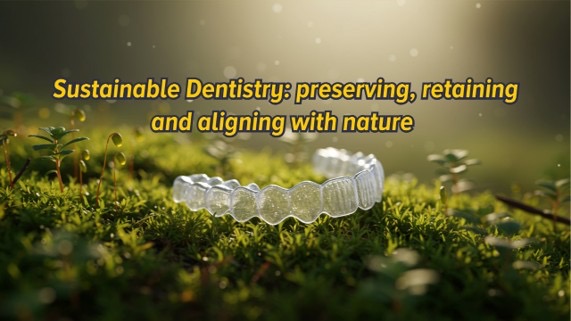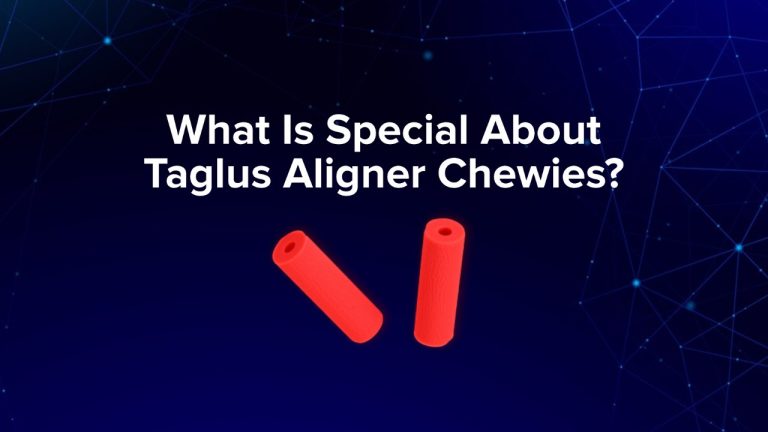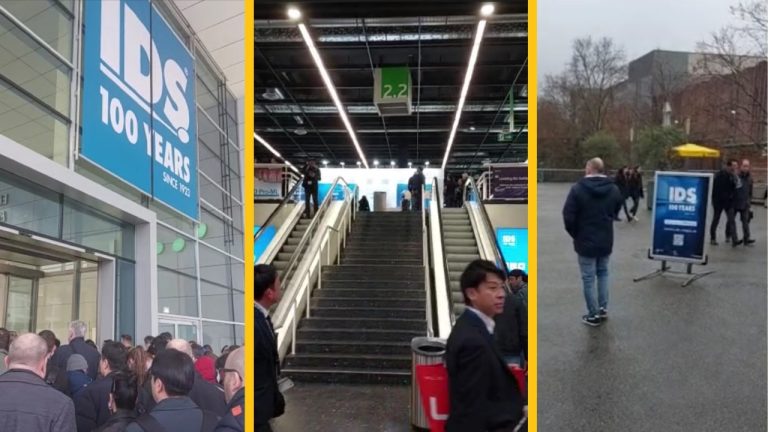Enquire Form
Sustainable Dentistry: Retaining & Aligning with Nature

Global awareness about environmental wellness is a need of the era. The increased education policies and various organizations working towards the same have further intensified the attention towards nature. With the increased industrial waste related to industries of electronics, fast fashion and e-commerce packaging, the next listing is of medical waste.
Dentistry, being one of the biggest markets after IT companies, is also one of the targeted profiles for adopting sustainable practices.
It is good news, though, that the dental industry has always been keen about maintaining the biocompatible nature of products and has been working to find the best innovation that supports the environment and its well-being.
Still, if we see the reports as per a dental office waste management platform in western countries, almost 4.8 million lead foils, 28 million x-ray fixer and 680 million chair barriers, bibs and chair light handles are disposed.
If we switch to reusable alternatives, a single dentist can divert almost more than 4500 plastic pieces that get used to make autoclave bags.
Similarly, a single practice can save almost 45000 plastic and paper pieces used as bibs and aprons.
Let’s see what efforts have been taken by the dental industry in the past to maintain sustainable dentistry and what the future roadmap is as well.
The successful past attempts
In the past, dental history has made many changes and shifts to maintain an eco-friendly infrastructure in relation to dental prostheses and consumables. These changes not only led to new innovations but also more efficient materials and technologies. Some of such switches are:
The main motto was to execute:
Scape, Switch and Save, which means eliminating the toxic, switching to more sustainable alternatives and saving or preserving nature.
Switching from Latex Gloves to Biodegradable Ones
The extensive use of latex gloves has contributed a lot towards waste landfills in the past. thus, there are alternatives made, like biodegradable latex gloves and nitrile gloves with EBT (Eco Best Technology).
Though this is a small step, it still has contributed significantly to the amount of plastic waste developed by the medical or dental industry.
Mercury Free Fillings
As per a report, 3.7 tons of mercury waste gets developed by dental practices, even after making so many alterations in the traditional practices.
Amalgam was the most widely used restorative material till the early 90s, but the strict limitation to this material has reduced the chances of big mercury hazards affecting the environment via ignored disposal procedures. These improper disposals also affected the aquatic ecosystem.
Restricting amalgam fillings in dentistry has helped to prevent health problems like allergic reactions, neurological disorders, tooth fractures, and other negative impacts of mercury exposure to the human body.
Switching to Digital Data
The swift shift of the dental industry from keeping and maintaining the physical data to a digital platform, be it patients’ records or diagnosis, has helped a lot.
The older versions of X-rays with plastic films now have been limited in dentistry. These films contributed to a major chunk of plastic waste in the past. The latest digital X-rays have swiftly turned the tables and significantly reduced the plastic waste caused by diagnostic purposes.
Some of the examples of digital X-rays are:
- IOPA
- OPG
- CBCT
- Bitewing and occlusal X-rays
3D Scanning and Printing
The 3D digital scanning of dentition and oral tissues is also one of the major steps towards making dentistry sustainable.
Digital scanning helps avoid excessive material and accessories waste, including plastic and metal, as well.
3D printing and scanning have also reduced the repeat work, which indirectly saves time, resources, and energy as well.
The aligners industry is one of the biggest dental verticals that utilizes digital technology and is thriving a lot to further reduce plastic waste. There are many aligners and aligners sheet manufacturing companies that are taking a step ahead to maintain sustainable dentistry.
For example, Taglus, one of the global leaders of aligners and retainer sheet manufacturing, has introduced dental arch-shaped aligner sheets that effectively reduce plastic waste and also increase their productivity.
Companies like these who want to be responsible leaders not only in technology but also in saving the environment also help in other environment-saving steps like;
- Plastic recycles campaigns
- Eco-friendly packaging
- Digital record savings and much more
The Future Roadmap for Sustainable Dentistry
There is still a lot of scope in the dental industry to integrate more pivotal strategies and solutions to effectively maintain a sustainable environment. Some of the solutions that are still in the pipeline or being tested are:
Comprehensive Plastic Waste Management:
It’s a fact that complete avoidance of plastic waste is not possible, but what can be managed is effective waste management. There can be dedicated recycling programs for plastic, paper and electronic waste, respectively.
A complete transition into reusable instruments could be a very good initiative in reducing plastic waste.
Eco Friendly Packaging
Reducing waste, conserving energy, and using renewable resources are the goals of eco-friendly packaging solutions, which will eventually result in a more sustainable and ecologically conscious approach to packaging.
Bulk orders also reduce the plastic or paper utilized in the shipping process.
In dentistry, sustainable packaging is very significant because there are very frequent instances of packaging the prostheses.
Dental labs alone can save up to tons of landfills every year by switching to reusable packaging system.
Patient Education
Since not only dentists or other dental professionals are responsible for sustainable dentistry, it’s necessary to educate the patients and public also. The use of environmentally friendly toothbrushes and avoiding plastic tooth accessories like toothpicks and plastic floss would also be helpful.
Introducing Strict Policies
Bringing stricter policies for utilizing sustainable materials in collaboration with the government or top dental organization hierarchy could be a game changer.
Collaboration with local management or government for providing incentives and awards to utilize and maintain the disposal protocols can also simplify waste management.
Efforts taken by various organizations
The FDI, world dental federation has already started rewards for maintaining a sustainable practice and also massive open online courses that give thorough knowledge about how to make environment more sustainable.
Taglus, one of the leading aligners sheet manufacturing companies, makes all the aligner accessories through upcycled material. Taglus produces thermoforming sheet waste. This waste is utilized in making all the accessories, leaving no ecological footprint.
Some of such products are:
Customizable retainer boxes: These fancy with and without mirror boxes are made of upcycled plastic
Pillow Boxes: These crystal-clear boxes are easy to use, transparent and tailored to fit various dental appliances and prostheses.
Such practices are highly appreciated in the dental industry and it’s time that every organization, small or big, should contribute a little towards the environment
In a Nutshell
It’s not merely a trend to TURN SUSTAINABLE but the need of an hour. We can easily maintain and promote sustainable dentistry through adopting innovative practices, strict commitment and futuristic vision.
Whatever the efforts it may take, the final goal is to reduce ecological footprints, increase environmental conservation and provide high-quality care to the community.
Know More About Us
SignUp To Our Newsletter And Get To Know More About Taglus
Copyrights@taglus-2025
*Taglus is a trademark of Vedia Solutions









Leave a Reply